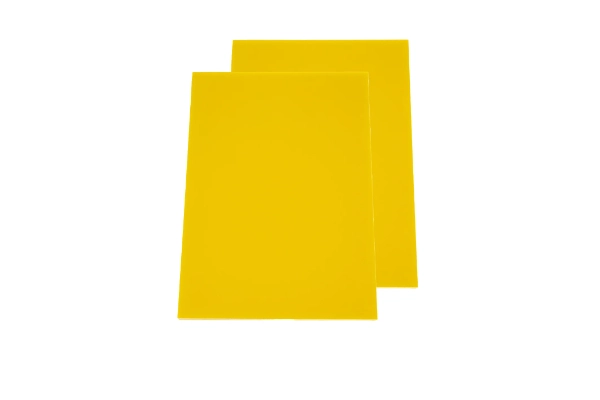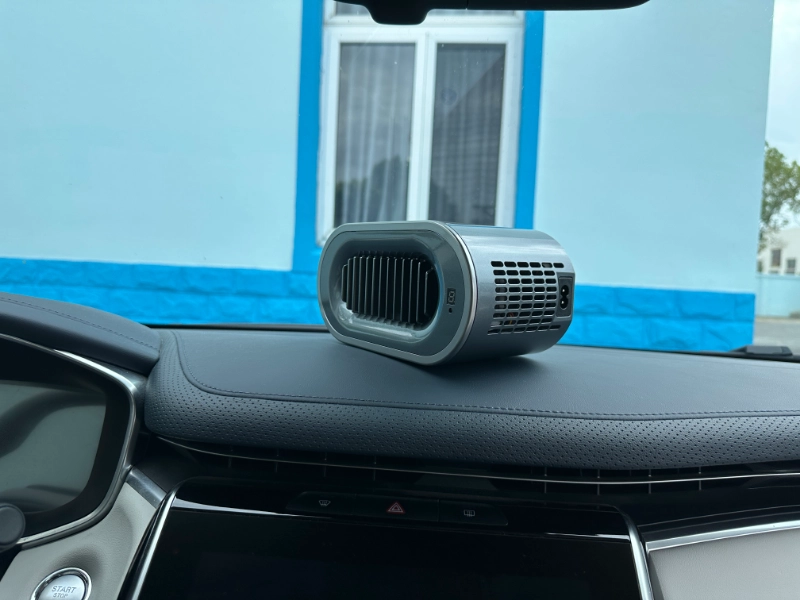Printed Circuit Boards (PCBs) are the backbone of modern electronic devices, enabling efficient connectivity and signal transmission between various components. A key element in PCB manufacturing is the choice of substrate material, which significantly affects performance, durability, and reliability. One of the most commonly used materials for PCBs is FR4 epoxy fiberglass sheet, a versatile and high-performance composite that provides excellent mechanical strength and electrical insulation. In this article, Blue Sun will explore the application of FR4 epoxy fiberglass sheet in printed circuit boards, its advantages, and why it is the preferred choice for PCB manufacturers worldwide.
What is FR4 Epoxy Fiberglass Sheet?
FR4 (Flame Retardant 4) is a glass-reinforced epoxy laminate that consists of woven fiberglass cloth embedded in an epoxy resin binder. This material is renowned for its high strength-to-weight ratio, thermal stability, electrical insulation properties, and flame retardancy. The term "FR4" refers to a grade designation by the National Electrical Manufacturers Association (NEMA), ensuring that the material meets strict industry standards for PCB applications.
Why is FR4 Fiberglass Sheet Used in Printed Circuit Boards?
FR4 epoxy fiberglass sheets are widely used in PCBs due to their exceptional balance of electrical, mechanical, and thermal properties. Here are the key reasons why this material is preferred:
1. Excellent Electrical Insulation
FR4 offers superior electrical insulation, which prevents electrical leakage and ensures that signals within the PCB remain stable. This is crucial for maintaining the integrity of electronic circuits and preventing short circuits.
2. High Mechanical Strength
The fiberglass reinforcement gives FR4 exceptional mechanical strength, making it resistant to bending, warping, and mechanical stress. This durability is vital for PCBs used in demanding applications such as aerospace, automotive, and industrial electronics.
3. Flame Retardancy
One of the defining characteristics of FR4 is its inherent flame-retardant properties. It does not easily ignite and self-extinguishes when the flame source is removed, making it a safer option for electronics that are prone to overheating.
4. Moisture Resistance
FR4 is highly resistant to moisture, ensuring that PCBs remain functional even in high-humidity environments. This makes it suitable for applications in consumer electronics, outdoor equipment, and medical devices.
5. Thermal Stability
Withstanding a wide range of temperatures, FR4 maintains dimensional stability and does not degrade under normal operating conditions. It is widely used in multi-layer PCBs, which require stable thermal properties.

Application of FR4 Fiberglass Sheet in Printed Circuit Boards
FR4 epoxy fiberglass sheets are the most commonly used substrate in PCB manufacturing. Depending on the design and requirements, they are applied in different types of PCBs, including single-layer, double-layer, and multi-layer boards. Below are some of the major applications:
1. Single-Layer PCBs
Single-layer PCBs, also known as single-sided PCBs, contain a single conductive layer of copper on one side of the FR4 substrate. These boards are widely used in simple electronic devices, such as:
- LED lighting systems
- Power supplies
- Relays and sensors
- Calculators and radios
The use of FR4 in these applications ensures cost-effective and reliable performance while maintaining good mechanical stability.
2. Double-Layer PCBs
Double-layer PCBs have conductive layers on both sides of the FR4 substrate, allowing for more complex circuit designs. These PCBs are used in:
- Consumer electronics (smartphones, tablets, laptops)
- Industrial control systems
- Power amplifiers
- Home appliances
FR4' s thermal stability and electrical insulation properties make it ideal for double-layer PCBs, which require enhanced conductivity and increased component density.
3. Multi-Layer PCBs
Multi-layer PCBs contain three or more conductive layers, separated by insulating layers of FR4 material. These boards are used in advanced electronic applications that demand high-speed data processing and miniaturization, such as:
- High-performance computing (servers, GPUs, CPUs)
- Aerospace and defense electronics
- Medical imaging devices
- Telecommunications (5G infrastructure, network routers)
FR4's ability to support high-density interconnects (HDI) and its excellent dielectric properties make it a critical component in complex PCB designs.
4. Rigid PCBs
FR4 is primarily used in rigid PCBs, where mechanical strength and durability are crucial. These PCBs do not bend or flex and are commonly found in:
- Automotive electronics (ECUs, sensors, infotainment systems)
- Industrial automation and robotics
- Wearable devices (smartwatches, fitness trackers)
5. Hybrid PCBs (FR4 with Other Materials)
In some applications, hybrid PCBs combine FR4 with materials like polyimide or PTFE to improve performance characteristics such as higher frequency capabilities and better heat dissipation. These hybrid boards are used in:
- Microwave and RF applications
- Aerospace communication systems
- High-speed digital circuits
Advantages of Using FR4 Fiberglass Sheet in PCBs
The extensive use of FR4 in PCB manufacturing is due to several advantages:
Cost-Effective - FR4 offers an optimal balance of performance and affordability, making it a cost-effective choice for a wide range of applications.
Easy Fabrication - It is compatible with standard PCB manufacturing processes, making it easier to design and produce.
Environmentally Friendly - FR4 materials comply with RoHS (Restriction of Hazardous Substances) regulations, ensuring they are free from harmful substances like lead and mercury.
Versatile - Suitable for a variety of electronic applications, from consumer gadgets to high-end industrial equipment.
Conclusion
The application of FR4 epoxy fiberglass sheet in printed circuit boards is widespread due to its high durability, electrical insulation, flame resistance, and affordability. Whether in simple single-layer boards or complex multi-layer PCBs, FR4 remains the industry standard for manufacturing reliable and high-performance electronic circuits.
As technology advances, the demand for high-speed, miniaturized, and efficient PCBs continues to grow. FR4 will likely remain a crucial material in PCB fabrication while evolving alongside emerging innovations in electronic manufacturing.
Would you like to explore alternative PCB materials or discuss specific FR4 variants? Let us know in the comments!
https://www.bluesun-elec.com.cn/Application-of-FR4-Fiberglass-Sheet-in-Printed-Circuit-Boards.html
www.bluesun-elec.com.cn
Blue Sun

